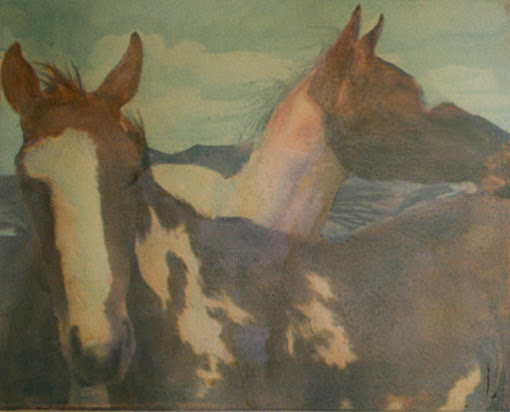I have become very, very finicky with the outcome of a gum print these days. Reprint however many times it takes to arrive at how I had pre-visualized it, what it could be when done right. Painful a that always is. This gum print of "Two Ponies Wild" is the third iteration. That was posted a few posts ago, so comparisons are possible.The gum print is the rarest of the photographic processes today. Competent printers are few and mighty rare. That is because gum printing has no order, nor bounaries, beyond the chemical/phisical applications one chooses. Gum prints are multi-color-layered carbon prints; photographic watercolors.
These days, I only work on one print at a time, and only make one final print; all unique. Working on a print for weeks makes that journey unique, and very personal. When a print is finally finished, after weeks of work, the last thing I would want to do is try and make a copy of it. Gum printing has to do with making Art, not commercial replication as a business. But that's just me.
Being a reprint of the same image; printed differently, the only things that have been altered are the color mixtures, and the order of the color layers, print times for that arrangement, float time and temperature to suit the layer. Now, it is finished, the earlier copy destroyed.
Gum Dichromate Print
"Two Ponies Wild"
Eastern Arizona

